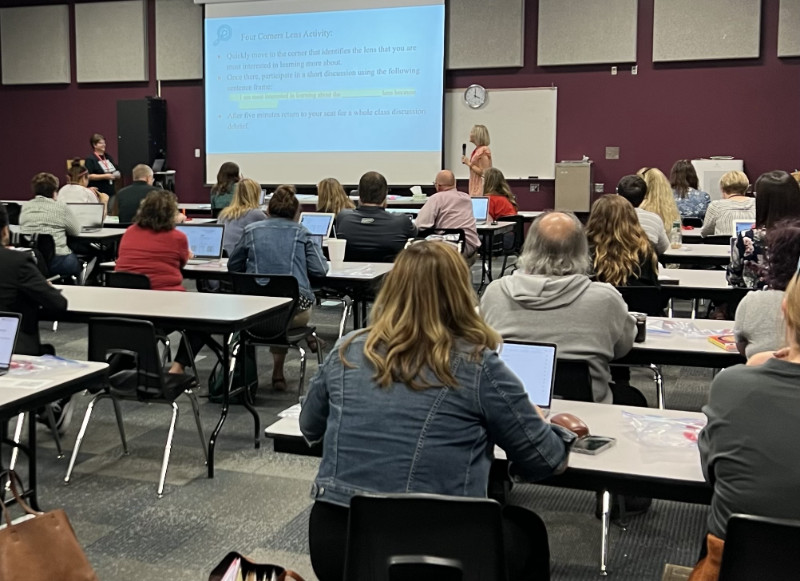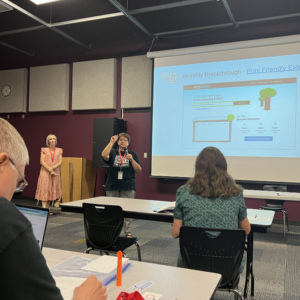
Utah school district develops a model for news literacy professional learning
 When it comes to natural beauty, Utah’s landscape never fails to impress. If you’re looking for that same reaction to the news literacy landscape, Utah’s Canyons School District delivers.
When it comes to natural beauty, Utah’s landscape never fails to impress. If you’re looking for that same reaction to the news literacy landscape, Utah’s Canyons School District delivers.
The school system created a professional learning initiative for teaching media and news literacy through NLP’s District Fellowship Program that has become a model for the state. “They have done a great job planning for a districtwide news literacy initiative. They have great district leads, discipline leads and educators who see news literacy education professional learning as their responsibility,” said Shaelynn Farnsworth, NLP’s senior director of education partnership strategy.
“We were already in discussion about how to improve information literacy, and NLP was an obvious choice for the partner,” Gretchen Zaitzeff said. She is the district’s library media specialist.
Hard work and serendipity
Lesli Morris, high school ELA specialist and a member of the district’s information literacy team, said Zaitzeff got the ball rolling. “Gretchen was at the forefront. She started us thinking about information literacy.”
Through Zaitzeff’s impetus, simultaneous efforts across the district and a dash of serendipity, the program fell into place. Morris became a member of NLP’s News Literacy Ambassador Program, which supports educators doing news literacy work in their communities. Utah passed legislation requiring civics education that included an information literacy component. (Retired teacher and school principal State Rep. Dan N. Johnson sponsored the legislation.) And the state awarded Jodi Ide, a high school social studies specialist, a competitive $250,000 grant for professional learning, which is part of the civics education legislation.
Support at the state level
The district also has a strong supporter at the Utah Department of Education in Davina Sauthoff, library media specialist lead. “Davina is a huge advocate of our work,” Farnsworth said.
Sauthoff said the district’s approach sets it apart. “I love how Canyons is building the capacity of information literacy skills with all educators, not just librarians or ELA teachers,” she said. “It’s a unique model to intentionally include all content area teachers from kindergarten through high school. I’m very excited about that.”
The initial year included 110 middle and high school educators in social studies and ELA, as well as teacher librarians and instructional coaches. They met in person or worked online asynchronously for eight months, voluntarily. This fall, secondary educators in all disciplines are participating. And next year, the program will expand to include elementary educators. That means teachers across grade levels and subjects in the 33,000-student district can join.
Sauthoff said Canyons’ program has inspired other districts that want to create similar initiatives. “Every district can choose to integrate news and media literacy the way they want. We find it important that districts build what makes the most sense for their communities,” she said.
Empowering educators
 The response to the first year was overwhelmingly positive. Teachers read ahead in coursework and shared resources in school and with their families. Educator feedback indicated an interest in continued support and resources, which the team is incorporating.
The response to the first year was overwhelmingly positive. Teachers read ahead in coursework and shared resources in school and with their families. Educator feedback indicated an interest in continued support and resources, which the team is incorporating.
“This needs to be something built with a structure for sustaining it because this is essential to saving democracy,” Ide said.
Morris, the ELA specialist, agreed. “Our democracy will not survive if our citizens are not making accurate, informed decisions,” she said. “People act on the information they have. If they have poor information, their decisions might be poor.”